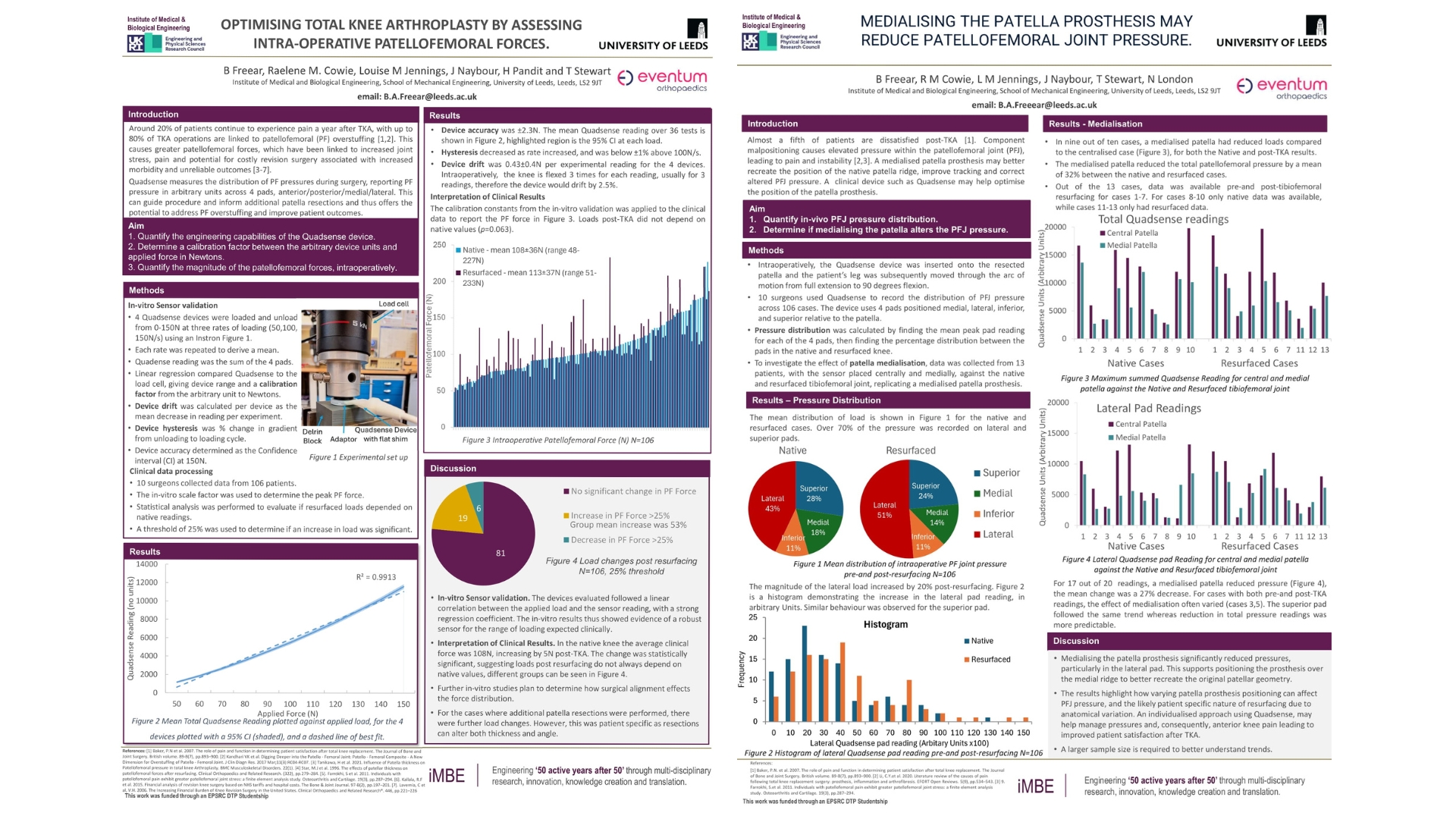


Eventum Orthopaedics is excited to share two newly compiled evidence summaries highlighting the clinical benefit of Quadsense, which provides intraoperative feedback on patellofemoral joint (PFJ) force distribution. These studies explore how real-time data on PFJ forces can guide surgical decisions and potentially improve outcomes in Total Knee Arthroplasty (TKA).
Poster 1: Optimising Total Knee Arthroplasty by Assessing Intraoperative Patellofemoral Forces
This research validates the engineering reliability of Quadsense and evaluates its clinical performance across over 100 TKA procedures. Laboratory testing confirmed a strong correlation (R² = 0.9913) between applied loads and sensor readings, confirming device precision.
In clinical application, Quadsense identified cases where PFJ forces increased significantly—by more than 25%—after resurfacing. These insights enabled the surgical team to consider patient-specific interventions, such as additional patella resections, to mitigate overstuffing and potentially reduce postoperative complications.
Poster 2: Medialising the Patella Prosthesis May Reduce Patellofemoral Joint Pressure
The second study investigates the impact of patella prosthesis positioning on PFJ pressures. Data collected using Quadsense in 13 patient cases showed that medialising the prosthesis—shifting it closer to the native patella ridge—reduced total PFJ pressure by an average of 32%, particularly in the lateral compartment.
These results suggest that a more anatomically informed prosthesis placement can reduce joint stress and improve knee tracking, supporting a more individualised surgical approach in TKA procedures.
A Step Toward Personalised Surgery
Together, these studies reinforce the clinical relevance as an intraoperative tool that enhances visibility into PFJ dynamics. By turning data into actionable insight, Eventum Orthopaedics continues its commitment to supporting orthopaedic teams in delivering safer, more effective, and personalised care for knee replacement patients.
You must be logged in to post a comment.
No Comments